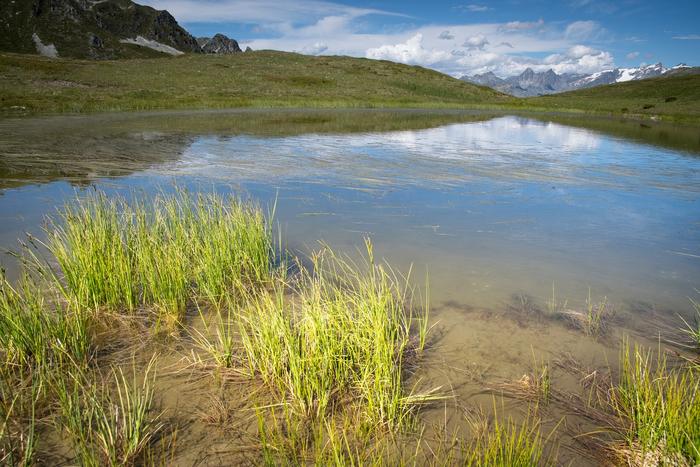Recent research has brought to light significant advancements in our understanding of carbon stocks within terrestrial ecosystems. As climate challenges escalate and the global need for sustainable solutions intensifies, scientists have focused their inquiries on the roles that both living and non-living carbon pools play in the carbon cycle. The results from this research reveal that terrestrial ecosystems are not only effective carbon sinks but also provide deep insights into how carbon is distributed across various forms, fundamentally enhancing our comprehension of global carbon dynamics.
A crucial finding from this research is that terrestrial carbon stocks have experienced an increase, effectively absorbing around 30% of the carbon dioxide emissions that stem from human activity. While the understanding of carbon sinks in general is well established, the intricacies surrounding the distribution of carbon among different terrestrial pools remains comparatively elusive. Living vegetation, primarily forests, has long been regarded as the major contributor to these carbon stocks. However, this assumption is being challenged as new evidence emerges, suggesting that a significant portion of carbon accumulation occurs in non-living carbon pools, such as soil organic matter and sediments.
This research endeavor was spearheaded by an expert team led by Yinon Bar-On from the California Institute of Technology. By harmonizing global estimates derived from a mix of remote sensing technologies and field data collected over nearly three decades, the team meticulously measured the fluctuations in carbon stocks between 1992 and 2019. One striking revelation is the rate at which these carbon sinks have accelerated—growing from a modest 0.5 gigatonnes per year to an impressive 1.7 gigatonnes annually over the last decade. Yet, intriguingly, forests accounted for only a small fraction, approximately 6%, of the overall carbon gains.
As forests face growing threats from both natural disturbances attributable to climate change and human activities, their role as carbon sinks is increasingly precarious. Forests, historically assumed to be robust reservoirs of carbon, are being rendered vulnerable, sometimes emitting nearly as much carbon as they sequester. This raises pressing questions about the sustainability of relying solely on forest ecosystems to combat carbon emissions and underscores the importance of safeguarding these environments while exploring alternative mechanisms.
In a fascinating twist, the research discovered that enduring carbon sinks appear to be linked to the anaerobic environments found at the bottoms of lakes and rivers. The inhibition of decomposition in such conditions leads to the preservation of organic carbon, contributing significantly to the global carbon sink equilibrium. Furthermore, human activities—like the construction of dams and retention ponds—play a pivotal role in enhancing these carbon storage capabilities. As such, this study both complicates and enriches our understanding of how anthropogenic actions intersect with natural processes to influence carbon dynamics.
Another critical insight pertains to the limitations of current dynamic global vegetation models. These models have long overestimated the importance of forests as carbon storage mechanisms, primarily due to a data deficit surrounding carbon accumulation in non-living pools such as soils and wetlands. With this research, we gain an enhanced perspective on terrestrial carbon accumulation processes that have been inadequately represented in existing models. The results from this study not only offer a clearer view of ongoing carbon exchanges in terrestrial ecosystems but also provide a vital framework for improving predictive models in the future.
The implications of these findings extend far beyond academia. Policymakers, conservationists, and environmentalists must reassess their strategies to mitigate climate change. Embracing a holistic view that includes living and non-living carbon pools may be critical in formulating effective approaches to combating the escalating threat of climate change. As such, this study serves as a call to action for refining carbon management strategies, ensuring both the protection and enhancement of diverse ecosystems that contribute significantly to carbon sequestration.
Through continued exploration and elucidation of the hidden dynamics that govern carbon stocks in terrestrial ecosystems, researchers can illuminate pathways toward sustainable development. Such efforts reinforce the urgency of preserving not just forests but a broader spectrum of ecosystems that contribute to the health of our planet. As the global community seeks solutions amid an ever-changing climate, understanding the multifaceted roles of these carbon sinks will be paramount. Insights gained from this research not only underscore the complexity of our environment but also highlight the interconnectedness of natural systems in the fight against climate change.
In closing, this transformative study underscores the need for an expanded understanding of carbon dynamics, reframing our comprehension of ecosystems’ roles in carbon sequestration. As the research community delves deeper into the factors that influence carbon stocks, their insights will be crucial for crafting strategies to effectively navigate the dual challenges of environmental degradation and climate change. The results invite further discussion and investigation, paving the way for innovative conservation and sustainability efforts aimed at enhancing carbon sinks on a global scale.
Subject of Research: Carbon stocks in terrestrial ecosystems
Article Title: Recent gains in global terrestrial carbon stocks are mostly stored in non-living pools
News Publication Date: 21-Mar-2025
Web References: DOI Link
References: N/A
Image Credits: Credit: INRAE – Sébastien De Danieli
Keywords
Carbon Stocks, Terrestrial Ecosystems, Carbon Sequestration, Global Warming, Climate Change




